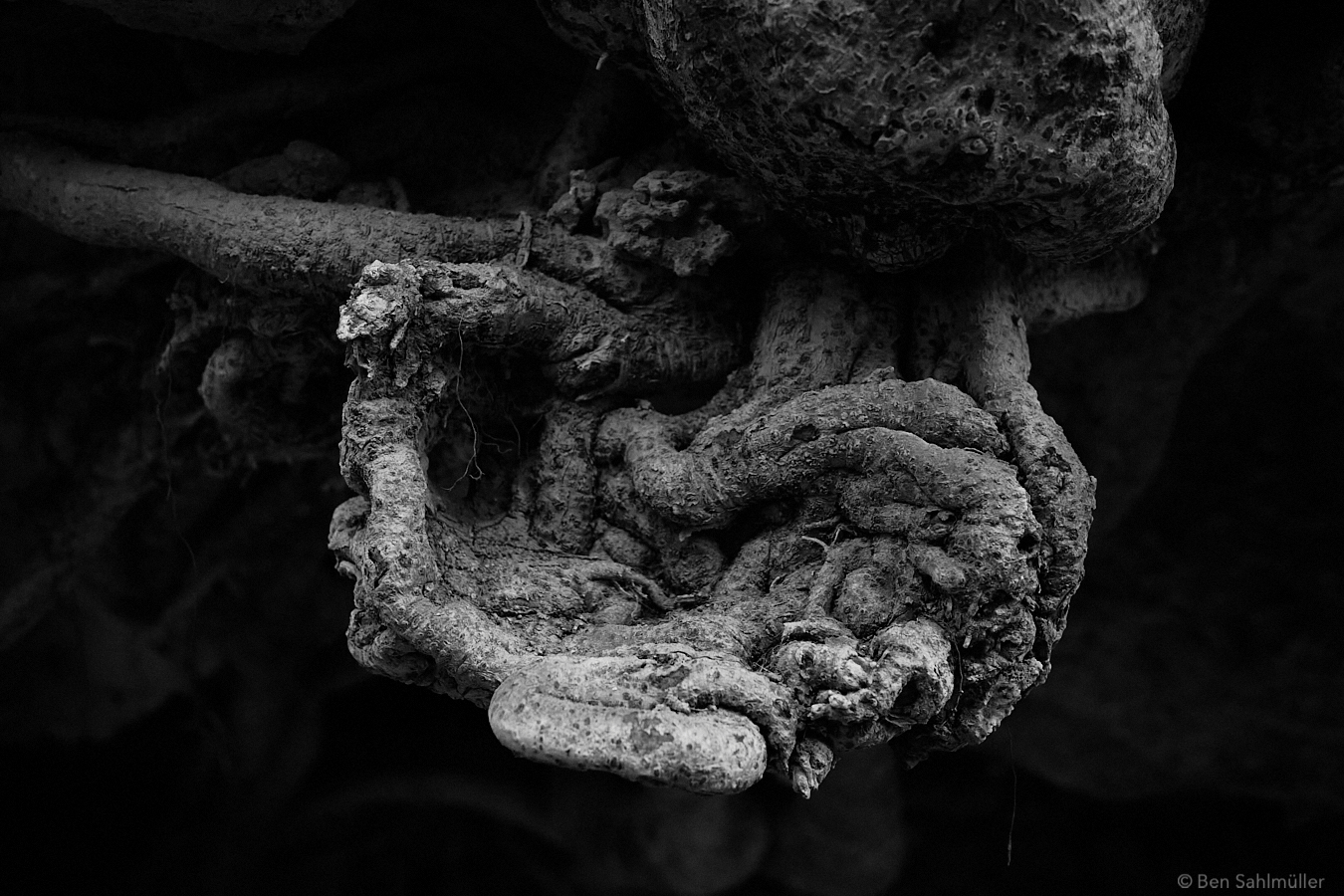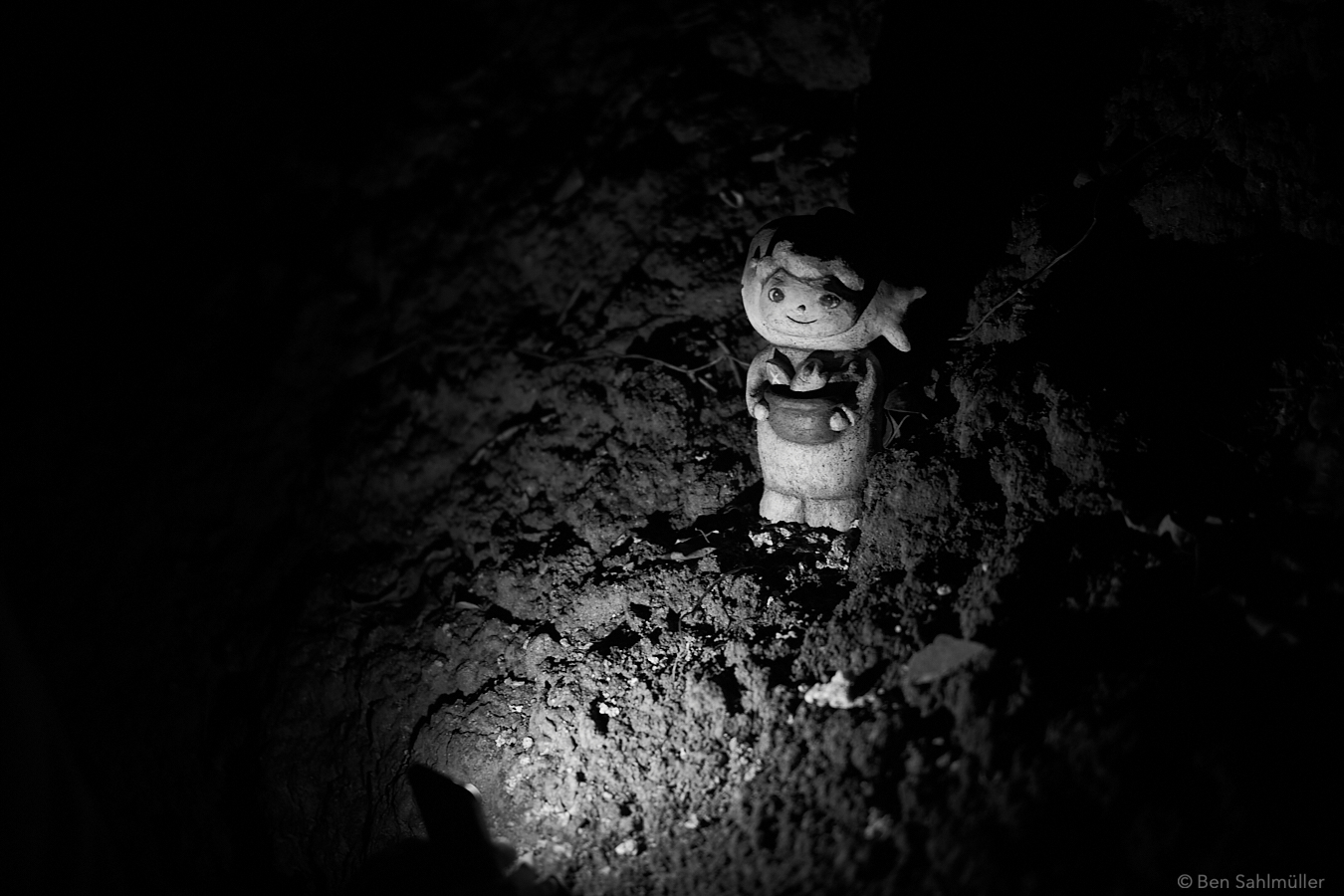Gnomes
(Xiaoliuqiu, 11/16)
There is something mythical about the paths surrounding Xiao Liuqiu, an otherworldly union of water, air, stone, and roots. Narrow steps carved into rocks. Small gnomes hidden at the wayside. Roots reaching out for the wanderer. Stone turtles rising from the rocks, as if to strive towards the sea.
According to Wikipedia, in 1622 the Dutch ship Goude Leeuw (the “Golden Lion”) hit the island’s coral reefs, after which its entire crew was massacred by the island’s natives. Nine years later, the Dutch yacht Beverwijck wrecked on the same reefs. “Its fifty-odd survivors battled for two days before also being slaughtered to a man.” Taiwan was a Dutch colony at that time, under the rule of the Dutch East India company. Its governor-general Hendrik Brouwer personally ordered the natives to be “punished and exterminated.” An expedition in 1933 found a large cave where the local Lameyans sought refuge but failed to succeed in their gruesome mission.
Three years later then, an even larger expedition of several hundred Dutch soldiers came to the island and chased the Lameyans into the cave. They sealed its entrances, only leaving small holes where they burned pine wood and sulphur. The screams and pleads of the natives echoed eight days over the island. Then there was silence again. 300 men, women and children have suffocated during this Lamey Island Massacre, 323 more were captured as they tried to flee the cave and sold into slavery.
In the decades following the massacre, the course of events was distorted through its path through history. It was moved thirty years back to a time when the Dutch already fled Taiwan after being defeated by Southern Ming general Koxinga. Thus, instead of the Dutch, legend has that it was the British who burned the cave. Most importantly though, it was not Lameyan aboriginals who died there, but “negros” escaping from their Dutch units. The cave is named after these illusionary victims, the “Black Spirit Cave.”


